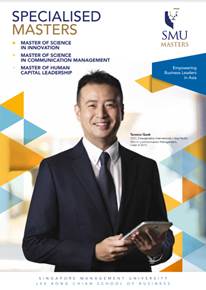
Inventive, groundbreaking, trailblazing: These hyperbolic adjectives often attached to new startups tend to suggest that product originality is pivotal to success for a burgeoning business. However, more often than not, the next big unicorn or company to go public isn't always a first adopter, but a pragmatist that has taken an existing product or idea, and innovated it for usability, greater visibility or enhanced experience.
Grab, South-east Asia's biggest ride-hailing and delivery company, for example, is valued at US$40 billion following its recent Special Purpose Acquisition Vehicle (SPAC) merger. However, rather than pioneering the ride-hailing movement — Uber was founded in 2009 in the US, and Gojek a year later in Indonesia — Grab was launched only in 2012.
But while Uber’s price performance since its IPO has been lacklustre, Grab’s proponents are expecting much better results — probably because it has been positioned as a “super app” instead of just another ride-hailing service. In fact, the company now boasts delivery services much like competitor Deliveroo, as well as digital payment services and a new digital banking license.
“Startup success depends on so many factors and it is hard to pinpoint a single attribute that can make or break a startup,” says David Gomulya, Associate Professor of Strategic Management and Lee Kong Chian Fellow.
“In this regard, a cutting-edge product or service is usually helpful to some extent, but it is hardly enough.”
A new technology coupled with poor execution could still lead to entrepreneurial failure, Prof Gomulya explains. Why? While some novel components are helpful for differentiating a startup from its competitors and providing a Unique Selling Proposition (USP), it is rare that every aspect of a product or service is entirely new. In most cases, it is a combination of some new components with proven and familiar ones. He also admits Grab is “basically a Southeast Asian version of Uber, at least when it first started. In this regard, it does not reinvent a whole lot.”
Although Grab shares a similar business model as Uber or Lyft, the company is also successful because it understands and adapts to local conditions — in fact, Grab merged with Uber in Southeast Asia in 2018.
“If it can continue to deliver that kind of execution, it has a good chance of having a sustainable business model and operations,” adds Prof Gomulya, who has a PhD in Strategic Management and Technology Entrepreneurship.
It therefore appears that building a revolutionary product or service might not be a sole prerequisite for startup success. Conversely, being fixated on innovation in the name of disruption could also be a stumbling block for new companies. After all, not every problem requires a breakthrough solution, but perhaps one that is more user-friendly or accessible.
“Someone wise says that we should not reinvent the wheel. So, I guess this would depend on how we want to interpret this phrase,” says Prof Gomulya.
“If by that we mean doing things in the old-fashioned way without any bits of innovation despite the progress in the industry, I would say this is not advisable. However, if this means innovating or changing not just for the sake of doing so, I would say it is possible.”
Although great inventors like Karl Benz or James Dyson have built global business empires, many other entrepreneurs excel in finetuning existing technology or products to amplify consumer adoption and awareness. By introducing small changes progressively, business owners may achieve success in the longer run.
“Most innovations are incremental rather than radical,” says Prof Gomulya.
“Be they processes, services, or products, they get better because people continue tinkering with them daily, rather than waiting for a singular ‘ah-ha’ moment to arrive.”
However, Prof Gomulya reinforces that radical innovations are certainly important or worth pursuing, as and when they arrive. But sitting around for a disruptive idea to fall from the sky is not a realistic strategy for pursuing a business, especially when other drivers like understanding users’ demands and ensuring that expectations are met — or even exceeded — can also be key factors for success.
Moreover, as with the case of Grab, diversification seems to be a trend for companies with ambitions of scaling quickly. Historically, household names like Apple — which went from creating personal computers to MP3 players and mobile phones — and Disney (from cartoons to theme parks and a subscription streaming service have grown into business behemoths with strategic adjacency moves.
“I would say it depends on the age of the startup and the nature of the diversification,” says Prof Gomulya, when asked if diversification is a sure-fire way to accelerate business success.
“If the startup is still young, diversification can be tricky. It is better to start with a focused niche until it becomes more established. Otherwise, diversification may prove to be a distraction more than anything else.”
Next, Prof Gomulya advises entrepreneurs to question the nature of the diversification — is it synergistic with the firm’s other offerings? In the case of Grab, for example, the introduction of a digital payment system makes it easier for customers to use Grab services, thereby helping it gain market share and therefore success.
And while game-changing technological advances, seven-digit funding or a celebrity CEO might help a company gain priceless publicity points, another star ingredient for success is its people. After all, a good idea might be useful, but being able to bring the concept to fruition requires talents with the ability to execute a good strategy and deploy available resources.
As Prof Gomulya asserts: “We often focus on the product, but I’d say let’s focus on the people first.”
But how does one find great co-founders, partners, colleagues, and other stakeholders to build a pool of valuable human capital? Active networking through industry events might be a prudent solution for meeting like-minded or well-connected individuals, who, in turn, might be able to open doors to other resources or prove to be assets to an organisation.
At times, furthering one’s education can also lead to fortuitous meetings with future co-founders or alliance partners, due to the extended periods of time spent together and collaborations on projects and activities. Prof Gomulya has observed how students in the SMU Master of Science in Innovation (MI) programme are immediately surrounded by peers who will receive the same level of training on innovation and have the opportunity to bond with one another over the course of study.
As Prof Gomulya shares: “Having received the same training will also allow you as a cohort to share some camaraderie and overlapping perspectives, which can enable you to hit the ground running when the time comes."
Speak to our Admissions Advisors
Lee Kong Chian School of Business
Postgraduate Admissions
Singapore Management University
Level 4, Postgraduate Programmes Office
50 Stamford Road, Singapore 178899
Tel: +65 6828 0882
